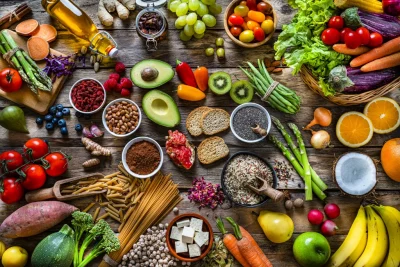Chobani’s plain yogurt is exempt from GST, but their ‘flip’ range is taxable. A recent case before the Administrative Appeals Tribunal (AAT) highlights the fine line between GST-free and taxable foods.
In 2000, when the Goods & Services Tax (GST) was initially introduced, basic food was excluded to secure support for the new tax regime. Now, 23 years later, this exclusion has created a complex distinction between GST-free and taxable foods, which is continually tested and modified. Chobani Pty Ltd, the U.S. yogurt giant, recently challenged this distinction in a case before the AAT.
The case centred on Chobani’s Flip Strawberry Shortcake flavoured yogurt and whether it should be subject to GST. This product consists of a tub of strawberry-flavoured yogurt and a separate tub of baked cookie and white chocolate pieces. If the two components were sold separately, the baked cookie pieces would be taxable, and the yogurt would be GST-free.
Initially, Chobani considered the Flip yogurt range as GST-free, relying on a 2001 GST ruling that allowed a “composite supply” to be treated as GST-free if the other components did not exceed the lesser of $3 or 20% of the overall product. This allowed them to treat the Flip yogurt as GST-free.
In 2021, the Australian Taxation Office (ATO) informed Chobani that their position had changed, and the Flip yogurt should be considered a combination food and, therefore, taxable.
According to the GST system, “combination foods” where at least one food component is taxable are subject to GST. For instance, lunch packs containing tuna and crackers are considered combination foods because it is intended for the tuna and crackers to be eaten together. However, in a “mixed supply” scenario where each item is separate and not intended to be consumed together, the GST applies individually to each product, as seen in the case of a hamper.
The AAT ruled in favour of the Commissioner’s interpretation that the Flip product was a combination food and, therefore, subject to GST on the entire product.
The Chobani case has several implications. Firstly, the ATO has issued a new draft GST ruling on combination foods (GST 2023/D1), replacing previous guidance. This ruling outlines three principles for determining whether a combination food exists:
- There must be at least one separately identifiable taxable food.
- The separately identifiable taxable food must be sufficiently joined together with the overall product.
- The separately identifiable taxable food must not be so integrated into the overall product, or be so insignificant within that product, that it has no effect on the essential character of that product.
Secondly, the GST status classification for at least one major product line on the ATO’s list will change. Notably, “dip” (packaged with biscuits, individually wrapped) was previously categorized as a mixed supply rather than a combination food.
In a previous case, Birds Eye (Simplot Australia) also failed to appeal the Federal Court’s decision that their frozen vegetable products combining omelettes, rice, or grains were not GST-free. The Court deemed them either prepared meals or a combination of foods and, therefore, taxable.
For food manufacturers, importers, and distributors, staying updated on the evolving GST landscape and using the correct classifications is crucial, as the rules and definitions are subject to change.
Should you please have any question in regards to above, please feel free to contact our friendly team in Pitt Martin Tax at 0292213345 or info@pittmartingroup.com.au.
The material and contents provided in this publication are informative in nature only. It is not intended to be advice and you should not act specifically on the basis of this information alone. If expert assistance is required, professional advice should be obtained.
By Robert Liu @ Pitt Martin Tax

Experienced Tax Accountant and Business Advisor with a demonstrated history of working in the accounting industry. Skilled in Tax, Accounting, Business Advisory and SMSF. Strong entrepreneurship professional with qualification Master of Professional Accounting, CPA Public Practice, Registered Tax Agent, Registered ASIC Agent, NSW Law Society External Examiner, Trust Account Auditor and Diploma of Finanical Planning. Specialised in SME, tax planning and international tax, he helped client save ample money and create wealth.

